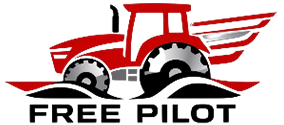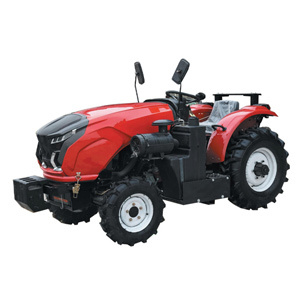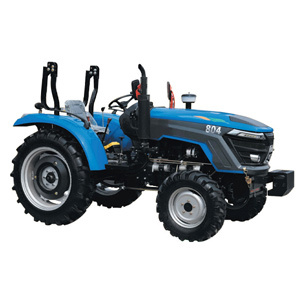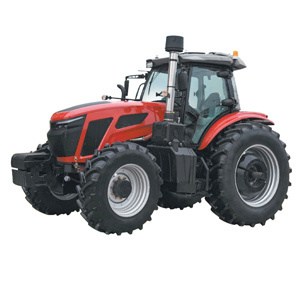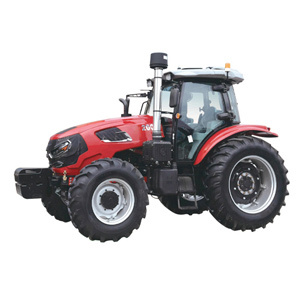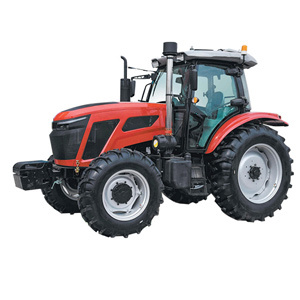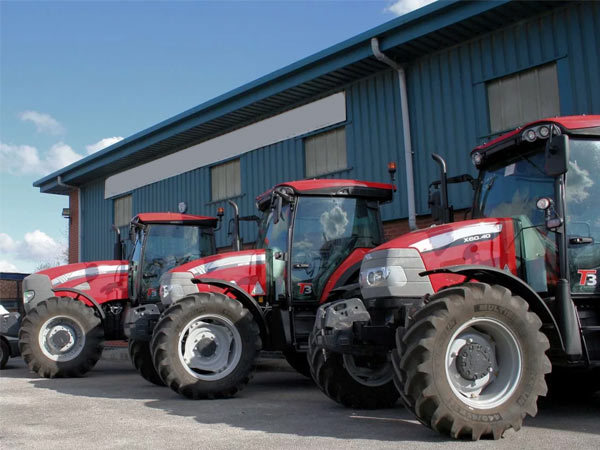Providing you with a one-stop solution for tractors
Beyond Horsepower: An Engineer's Guide to the "Chassis & Drivetrain" Core Tech Not on the Spec Sheet
Release time:
2025-11-12
As an engineer, I see too many buyers captivated by horsepower and hydraulic specs, while the true soul of a tractor—its chassis and drivetrain—languishes in the shadows of the brochure. These are the components that define durability, stability, and ultimately, productivity. Let's pull back the curtain on the critical engineering you can't see but absolutely must feel.
1. The Chassis: Not Just Weight, but Intelligent Rigidity
The chassis is the tractor's skeleton. A weak skeleton cannot support a powerful body.
The Hidden Spec: Frame Construction.
Standard Design: Many tractors use a "unitized" or "semi-unitized" frame where the engine, transmission, and rear axle housing are bolted together to form the structure. This is cost-effective but can transmit vibrations and stresses throughout the machine.
Engineered Superiority (What to Look For): High-performance and heavy-duty tractors often feature a full perimeter frame. This is a massive, rigid steel structure that runs the length of the tractor, to which all major components are mounted. Think of it as the difference between a freight train chassis and a car chassis.
Why It Matters: A full frame provides immense torsional rigidity. Under heavy, uneven loads (e.g., one rear wheel in a ditch), the frame resists twisting. This protects the transmission and axles from stress, ensures implements stay aligned, and provides a stable, confident feel that you simply cannot get from a lighter construction.
2. The Final Drive: The Ultimate Torque Multiplier
The final drive is the last gear reduction before power hits the wheels. This is where torque is multiplied to its maximum, and it's a primary differentiator between basic and heavy-duty machines.
The Hidden Spec: Final Drive Design.
Planetary Gear Sets: This is the gold standard. A set of gears housed within the wheel hub or axle tube.
Why It Matters:
Torque Capacity: Planetary gears distribute the immense load over multiple gear teeth, allowing them to handle far greater torque than a single spur gear.
Durability: Being enclosed and bathed in oil, they run cooler and last longer.
Compact Size: They provide massive reduction in a small space, allowing for larger wheel diameters and better ground clearance.
The Engineer's Question: Don't ask "Does it have planetary gears?"—most do. Ask, "What is the size and rating of the planetary gears?" Larger gears and a robust housing are direct indicators of a drivetrain built for a 20-year life, not just a 5-year warranty.
3. The PTO Driveline: Beyond the Spline
The PTO is more than a spinning shaft. Its integration into the transmission speaks volumes about the tractor's design philosophy.
The Hidden Spec: PTO Brake & Clutch Design.
Basic Systems: May use a simple, wear-prone band brake.
Engineered Systems: Employ an oil-immersed, multi-disc clutch and brake pack. This system is located inside the transmission, running in the same oil that cools and lubricates the gears.
Why It Matters:
Longevity: The oil prevents wear and dissipates heat, making the system last the life of the tractor under normal use.
Smooth Engagement: Provides buttery-smooth engagement of the PTO, preventing the violent "jerk" that shocks implements and drivelines.
Powerful Braking: Stops the implement quickly for safety. This is a hallmark of a well-engineered, high-value tractor.
4. The Axle Architecture: Forged vs. "Formed"
The axle housings carry the weight of the tractor and the brutal forces of traction.
The Hidden Spec: Axle Housing Construction.
Cast or Fabricated Housings: Common and functional, but can be more susceptible to impact damage and fatigue over decades of use.
Forged Steel Housings: The pinnacle of strength. Forging aligns the steel's grain structure, creating a part that is incredibly strong and resistant to shock loads.
Why It Matters: In harsh conditions—hitting a rock ledge, pulling a stuck implement—a forged axle housing is far less likely to crack or fail. It's the difference between a component that is "strong enough" and one that is "over-built for peace of mind."
Conclusion: How to "Feel" the Engineering
You can't see these features in a photo, but you can feel them on a demo. When you test a tractor:
Listen: Is the PTO engagement a gentle "thump" or a jarring "CLUNK"?
Feel: Drive it across a ditch or uneven ground. Does the frame feel solid and twist-resistant, or does it feel like the whole machine is flexing?
Ask: "Can you show me the technical documents detailing the final drive design and axle housing construction?"
RELATED BLOG
